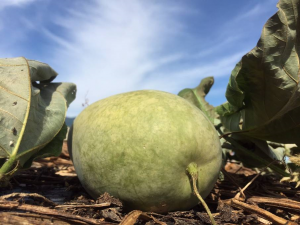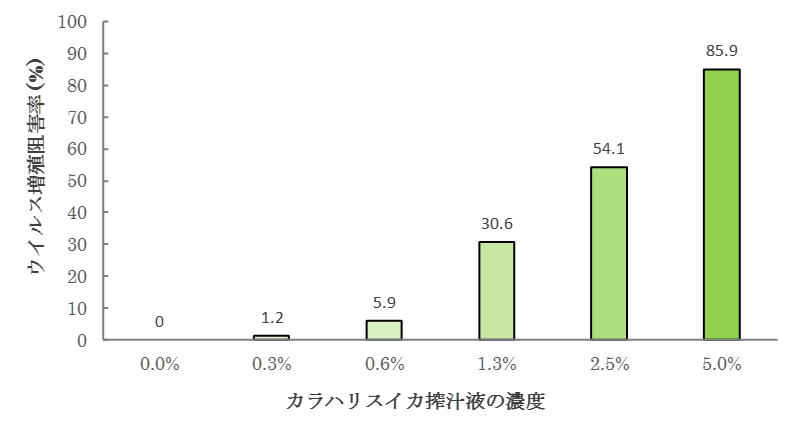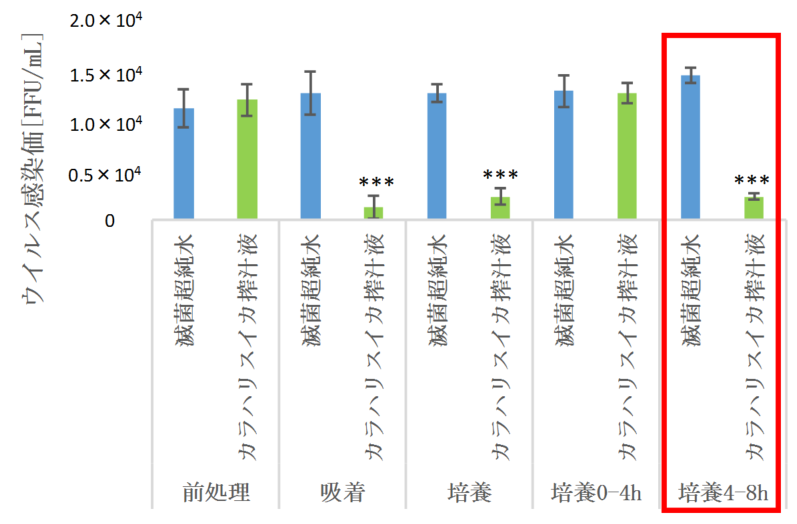Press Releases
* Please note that the news release contains the content at the time of the announcement and may differ from the latest information.
Confirmed the effect of Kalahari watermelon on suppressing influenza virus growth
-Expected as a new candidate for influenza virus countermeasures-
Euglena Co., Ltd.
Euglena Co., Ltd. (Headquarters: Minato-ku, Tokyo, President: Mitsuru Izumo) and Euglena Group's Plant High-Tech Research Institute Co., Ltd. (Headquarters: Ikoma City, Nara Prefecture, President: Masahiro Nishinaga) We are pleased to inform you that we have confirmed the research results that suggest the growth inhibitory effect. The results of this research were presented at the 55th Annual Meeting of the Kinki Branch of the Japanese Society of Nutrition and Food Science held on October 22, 2016.
Influenza virus is known as a virus that causes respiratory infections, and vaccines and several anti-influenza drugs have been developed, but there are problems such as the emergence of new viruses and side effects on the nervous system. Measures are required. In this test, Kalahari watermelon juice was added during influenza virus culture, and the subsequent growth status was measured. As a result, it was confirmed that the growth of influenza virus was suppressed according to the concentration of Kalahari watermelon juice.
We will continue to carry out research and development with the aim of effectively utilizing Kalahari watermelon.
The details are as follows.
About the influenza virus growth inhibitory effect of Kalahari watermelon
■ Research content
Influenza virus was adsorbed on canine kidney cells, and the cells were placed in a medium containing watermelon juice containing different concentrations and cultured. As a result, it was confirmed that the growth of influenza virus was suppressed in a concentration-dependent manner as compared with the one to which the Kalahari watermelon juice was not added (Fig. 1).
In addition, an experiment was conducted to confirm at which stage the influenza virus growth was suppressed. The timing of addition of Kalahari watermelon juice was divided into two, the virus adsorption period and one cycle (8 hours) required for virus growth, and the activity of influenza virus was measured at each time point. As a result, it was suggested that the growth of influenza virus may be suppressed especially at the stage of virus replication * 2 that occurs in the late stage of culture (red frame in Fig. 2).
■ Consideration
This study suggests that Kalahari watermelon juice has an influenza virus growth inhibitory effect.
* 1 Kalahari squid is a wild watermelon derived from the Kalahari Desert in Botswana. Tolerance to drought stress and antioxidant / water retention function of fruit juice
It is used as food and cosmetics by taking advantage of its characteristics.
* 2 Replication is the process of assembling a virus from the nucleic acid (genetic information) amplified in the cell from the virus during the growth stage of the virus.
Figure 1: Influenza virus growth suppression rate of Kalahari watermelon juice
(Definition of inhibition rate: Kalahari watermelon juice is compared with "Control (without Kalahari watermelon juice added)"
It represents the ratio of how much the virus growth was inhibited. The control inhibition rate is 0%. )
Figure 2: Influenza virus growth inhibitory effect at each growth stage
(** p <0.01, *** p <0.001)
(Definition of infection titer: virus strength at the time of infection.)
(FFU: Abbreviation for Focus Forming Unit. FFU / mL indicates how many cells denatured by virus in 1 mL of culture medium.)
-Contact for inquiries from the press-
Euglena Co., Ltd. Public Relations and IR Division



